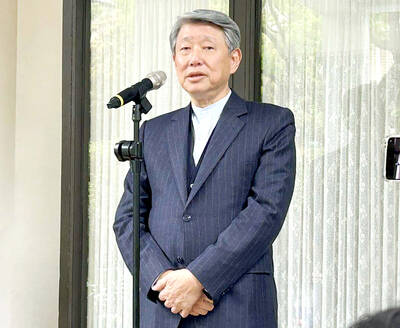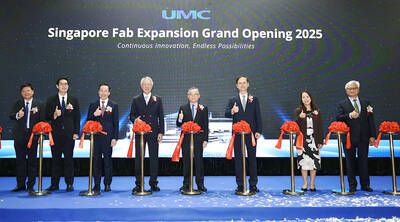A shortfall in the massive funding needed to build roads, ports, power plants and other infrastructure in Asia could dim the lights on the region's brightening economic growth, experts said yesterday.
While there are signs funds were returning to the region, the experts urged authorities to develop alternative sources of financing such as the bond market and increasing the participation of local banks for long-term lending.
They also said more needed to be done to carry out reforms to meet global standards in terms of enforcing contractual obligations and transparency to entice lenders to re-enter the market.
"Without the roads, without the lights turned on, you won't have the GDP growth that people are expecting," said analyst John Bailey of international credit rating agency Standard & Poor's.
Foreign funding for infrastructure development dried up between 1997 and 1999 as a result of the financial crisis, which burnt international lenders after borrowers defaulted on their loans.
Asian Development Bank (ADB) president Tadao Chino said recent estimates put Asia's infrastructure investment requirements at more than US$250 billion a year in the medium term.
"The need for external financing is tremendous," Chino said in a speech at the opening of the ADB's two-and-a-half-day meeting gathering the elite of the region's financial and banking sectors.
"The financing shortfall is a serious constraint to the region's continued economic growth and development, and to achieving the medium-term development goals."
He said infrastructure is "critical" for sustained economic growth and its impact extends to other sectors as roads and power generators for example can bring development and basic services to the rural areas.
Standard & Poor's said infrastructure finance volumes to Asia have grown steadily in the past few years, following a "dramatic decline" during the financial crisis.
"We are now beginning to see developers and banks return to Asia as the current economic recovery starts to fuel demands for large infrastructure projects," Bailey told reporters on the sidelines of the ADB meeting.
"It is important to say that this is not yet a full recovery. But it goes a long way from the Asian crisis," he said at a news briefing on the sidelines of the ADB meeting.
Surinder Kathpalia, head of Standard & Poor's in Singapore, said one of the critical issues in the next phase of Asia's development is investment in infrastructure.
"Unless these investments are financed, this could possibly choke growth going forward," Kathpalia said.
Bailey cited the case of China where power blackouts still happen because of under-investment in the energy sector.
"We've seen that the market still remains cautious about infrastructure projects in some parts of Asia ... Some of the painful lessons [from the financial crisis] are still in the lenders' and bankers' minds," Bailey said.
Lenders are now "increasingly bringing in more institutions such as the ADB and other multilaterals to diversify risks and are getting more aggressive about getting political risk insurance," Bailey added.
He said most developing markets in Asia still have weak legal environments which often prevent the enforcement of contractual obligations.
Legislations remain ambiguous and are rapidly changing, while disclosure levels are below international standards.

MULTIFACETED: A task force has analyzed possible scenarios and created responses to assist domestic industries in dealing with US tariffs, the economics minister said The Executive Yuan is tomorrow to announce countermeasures to US President Donald Trump’s planned reciprocal tariffs, although the details of the plan would not be made public until Monday next week, Minister of Economic Affairs J.W. Kuo (郭智輝) said yesterday. The Cabinet established an economic and trade task force in November last year to deal with US trade and tariff related issues, Kuo told reporters outside the legislature in Taipei. The task force has been analyzing and evaluating all kinds of scenarios to identify suitable responses and determine how best to assist domestic industries in managing the effects of Trump’s tariffs, he

TIGHT-LIPPED: UMC said it had no merger plans at the moment, after Nikkei Asia reported that the firm and GlobalFoundries were considering restarting merger talks United Microelectronics Corp (UMC, 聯電), the world’s No. 4 contract chipmaker, yesterday launched a new US$5 billion 12-inch chip factory in Singapore as part of its latest effort to diversify its manufacturing footprint amid growing geopolitical risks. The new factory, adjacent to UMC’s existing Singapore fab in the Pasir Res Wafer Fab Park, is scheduled to enter volume production next year, utilizing mature 22-nanometer and 28-nanometer process technologies, UMC said in a statement. The company plans to invest US$5 billion during the first phase of the new fab, which would have an installed capacity of 30,000 12-inch wafers per month, it said. The

Taiwan’s official purchasing managers’ index (PMI) last month rose 0.2 percentage points to 54.2, in a second consecutive month of expansion, thanks to front-loading demand intended to avoid potential US tariff hikes, the Chung-Hua Institution for Economic Research (CIER, 中華經濟研究院) said yesterday. While short-term demand appeared robust, uncertainties rose due to US President Donald Trump’s unpredictable trade policy, CIER president Lien Hsien-ming (連賢明) told a news conference in Taipei. Taiwan’s economy this year would be characterized by high-level fluctuations and the volatility would be wilder than most expect, Lien said Demand for electronics, particularly semiconductors, continues to benefit from US technology giants’ effort

‘SWASTICAR’: Tesla CEO Elon Musk’s close association with Donald Trump has prompted opponents to brand him a ‘Nazi’ and resulted in a dramatic drop in sales Demonstrators descended on Tesla Inc dealerships across the US, and in Europe and Canada on Saturday to protest company chief Elon Musk, who has amassed extraordinary power as a top adviser to US President Donald Trump. Waving signs with messages such as “Musk is stealing our money” and “Reclaim our country,” the protests largely took place peacefully following fiery episodes of vandalism on Tesla vehicles, dealerships and other facilities in recent weeks that US officials have denounced as terrorism. Hundreds rallied on Saturday outside the Tesla dealership in Manhattan. Some blasted Musk, the world’s richest man, while others demanded the shuttering of his